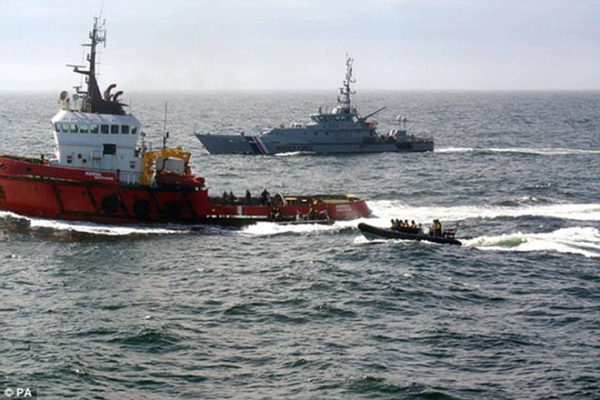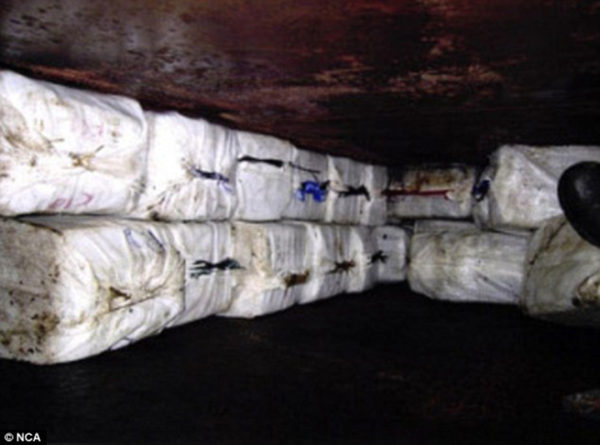Head of the Customs Anti-Narcotics Unit (CANU) James Singh, while elated about yesterday’s public acknowledgement of the part the unit and investigators from the Guyana Police Force played in a major drug conviction in the United Kingdom (UK), said it is only one example of the ongoing collaboration between the Governments of Guyana and the UK.
“It just shows that the law enforcement from Guyana assists investigators in other countries to investigate major drug busts,” Singh said yesterday when asked to respond to a statement from British High Commissioner Greg Quinn lauding the assistance from this country which helped with the convictions of two Turks for trafficking in 3.2 tonnes of cocaine with an estimated street value of £512 million.
Singh noted that the collaboration can now be publicly addressed following the convictions.
According to Quinn’s statement, the UK National Crime Agency was also grateful to the witnesses from Guyana who had testified during the trial.
“Our cooperation has resulted in a significant drug interdiction and the conviction of those involved in this crime. We look forward to continued cooperation in the coming months and years,” the statement said.

Meanwhile, in an invited comment Crime Chief Wendell Blanhum told Stabroek News that the force will continue to cooperate and give its full support to its law enforcement counterparts overseas.
“The relationship over the years, particularly with the UK has been reciprocal in that they also assisted us in our time of need and we look forward to strengthening our relationship with the UK on the law enforcement front,” he said.
Blanhum confirmed that several local law enforcement officials testified in the trial.
He said, “It is always satisfying when investigations result in prosecution and conviction.”
Following a 12-week trial at the High Court in Glasgow, Scotland, Captain of the Tanzanian flagged MV Hamal Mumin Sahin and first mate Emin Ozmen were found guilty of two counts of drug trafficking. They will be sentenced on 12 August. The charges against four crew members were found not proven. Three others had been acquitted earlier.
A statement yesterday from the UK’s National Crime Agency (NCA) detailed the sophisticated investigation which unearthed the cocaine and pieced together the voyages of the MV Hamal as it sailed with its huge illicit cargo.
The cocaine, with an estimated potential street value of £512 million once adulterated, was found concealed on board the vessel in April 2015.
The NCA said that the vessel had been intercepted by the Royal Navy destroyer HMS Somerset and Border Force cutter HMC Valiant in the North Sea approximately 100 miles off the coast of Aberdeenshire.
The Royal Navy Ships were acting on intelligence supplied by the NCA, working in co-operation with the French customs investigation service DNRED and the UK’s National Maritime Information Centre.
NCA officers were deployed on HMS Somerset as the MV Hamal was boarded and taken to the Scottish Port of Aberdeen.
After the vessel arrived in port on Friday 24 April various teams began a search.
“Ballast tanks on the Hamal were pumped out so that search crews could gain access.
As they began to drill through a metal panel inside one of the tanks, a white powder was seen on the drill bit. It tested positive for cocaine,” the statement said.
Officers later removed the panel and the bales of cocaine were discovered inside an adjoining compartment and it was because of the way the bales were stacked that led investigators to realise that there was another access point to the vessel.

A detailed search commenced and in the crew quarters underneath a medical cabinet a cemented area on the floor was found and after investigators chipped away the cement, a sealed metal hatch, which led to the tank with the cocaine, was found.
“Border Force officers wearing specialist breathing equipment entered the tank and over the next two days (27 and 28 April) 128 bales of cocaine were removed, each weighing approximately 25 kilos. The total weight of the cocaine taken off the MV Hamal was in excess of 3.2 tonnes.
“A mobile crane removed the recovered bales from the vessel and Police Scotland then took the drugs under armed guard to a secure location,” the NCA statement said.
NCA officers then detained the nine Turkish crew members and they were formally questioned in Aberdeen, while investigators searched the ship for clues as to the vessel’s route.
The NCA said that a deck log and engine log books stated that the vessel had spent time in West Africa after leaving Turkey. The NCA said that analysis of the ship’s navigation system showed that, even though the AIS navigational beacon was turned off, GPS had continued to monitor movements on a laptop computer.
“This proved that the ship had sailed from Tenerife on 8 March 2015 and travelled across the Atlantic, arriving in Georgetown, Guyana, on 21 March. It left five days later and, significantly, paused its journey for around 12 to 15 hours around two days after leaving port. This is where investigators believe the drugs were loaded on,” it said.
After the seizure, officers from the UK worked with the Guyanese authorities to trace the location of the vessel while it was in Guyana obtaining details about individuals associated with it.
It was mobile phone evidence that placed a number of the crew in the Georgetown area, contradicting the log books.
“Officers also recovered a coded satellite phone email message from the vessel, containing a series of numbers. When checked against a key found in a notebook on board this corresponded with co-ordinates for a location in the North Sea, north of the Dutch/German border, where investigators believe the drugs would have been offloaded,” the NCA added.





